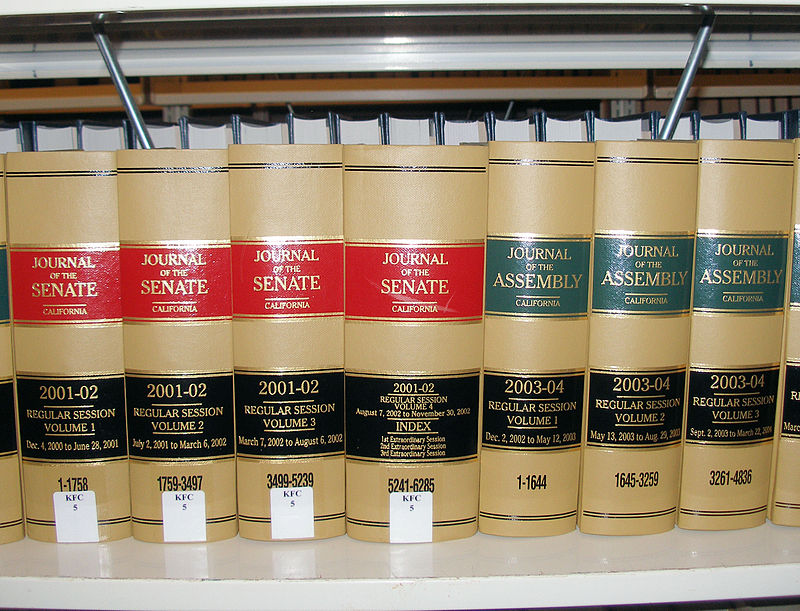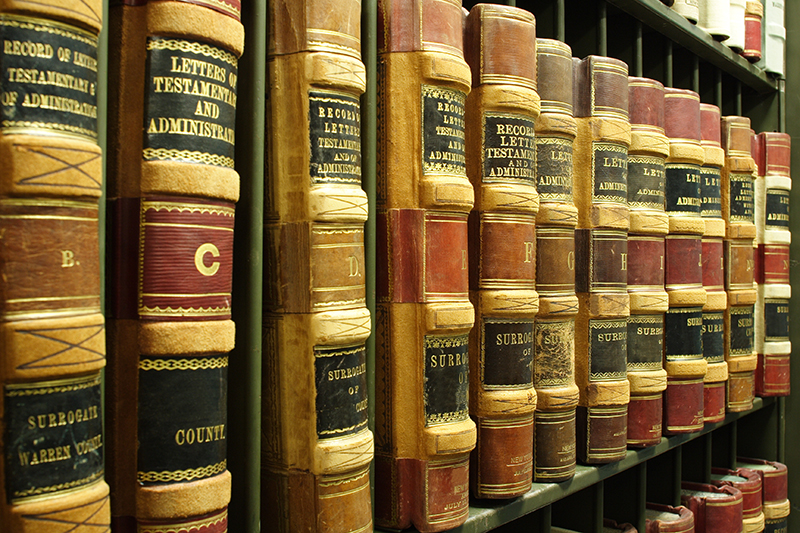
Journals of the California Legislature. (Photo: Wikipedia)
Some Insights on the Administrative Procedure Act Process in California
APA sets forth the rules by which the state’s executive branch agencies must adopt regulations
By Chris Micheli, June 25, 2020 1:51 pm
California’s Administrative Procedure Act (APA), which is patterned after the federal APA, sets forth the rules by which the state’s executive branch agencies must adopt regulations. The twin goals of the APA are to ensure, for purposes of a proposed rulemaking, notice to the public and an opportunity to be heard. In that vein, there are a few items of interest for those who participate in the rulemaking activities of state agencies.
The defined purpose of a regulation is to “implement, interpret and make specific” a statute, so for those who submit comments on proposed regulations to an agency should describe how a proposed regulation accomplishes one or more of these purposes (if you support the rulemaking), or why the regulation does not accomplish them (if you oppose the rulemaking).
The California APA provides six statutory standards of review that the Office of Administrative Law (OAL) must use in its review of proposed regulations. The role of OAL is to ensure that the state agency abided by the APA when adopting a regulation. “Clarity” is one of the main reasons that OAL rejects a regulation. This is usually due to ambiguous or undefined terms that are used in the regulation. So, if the proposed regulation you are commenting on is lacking in clarity, that may be your best avenue for success in thwarting the adoption of the regulation.
Lack of “necessity” is another common reason for OAL to reject a proposed regulation. Generally, under this statutory standard of review, OAL is looking at issues such as: Has the regulatory agency distinguished between the what and the why? The “why” is often not done sufficiently by the state agency. In other words, the agency sometimes does not provide an adequate showing of why the proposed regulation is necessary. The agency usually does a good job in explaining the “what” (i.e., what the regulation proposes to do), but not always the “why” – why the regulation is necessary. “Necessity” is probably the easiest standard to comply with, even though there are a number of rejections by OAL under that standard.
Practitioners should also appreciate the difference between the “authority” standard and the “consistency” standard and why these two standards are often confused by people providing comments on proposed regulations. Some who criticize an agency’s rulemaking will argue, “the agency does not have the authority to do this regulation.”
However, the authority standard is not the right one in this instance. Instead, the “authority” standard is pretty easy to determine – it is whether the agency has general or specific authority to adopt the regulation. Almost all state agencies have explicit authority to adopt regulations. Most major agencies have general rulemaking authority, while other agencies get a specific grant of rulemaking authority (e.g., “__ (agency) shall adopt regulations to implement this section.”)
Often times, persons confuse these two standards because, when one argues the agency does not have authority, it is not that the agency does not have authority to adopt the regulation because almost all of them do. Instead, practitioners should argue that the underlying statute that the agency is trying to “implement, interpret or make specific” is being improperly expanded or narrowed and the proposed regulation is actually lacking “consistency” with the underlying statute.
As a result, practitioners should actually utilize the “consistency” standard and argue that the proposed regulation is inconsistent with the statute, rather than claim that the agency lacks authority to adopt the proposed regulation.
As a final item, there continues to be confusion about whether separate comments can be submitted to OAL after the conclusion of the agency rulemaking. The answer is no, because OAL does not have authority to consider submissions made outside of the rulemaking file. Specifically, pursuant to Government Code Section 11349.1(a), in reviewing regulations, OAL must “restrict its review to the regulation and the record of the rulemaking proceeding.”
Accordingly, OAL is prohibited from considering any comments submitted to it directly concerning proposed non-emergency regulations. Code of California Regulations, Title 1, Section 55(a) specifically sets forth this prohibition on OAL considering comments submitted directly to OAL by the public when OAL is reviewing non-emergency regulation filings and certificate of compliance regulation filings. OAL only accepts comments on emergency rulemaking actions during an open comment period.
- Pleadings in Eminent Domain Cases - December 20, 2025
- Complaint Resolution in Child Support - December 20, 2025
- Tribal Court Civil Money Judgment Act - December 19, 2025




